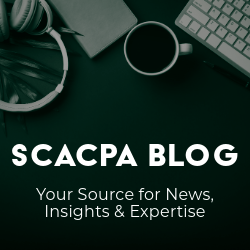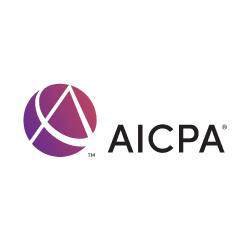By Donny Shimamoto, CPA.CITP, CGMA
Inspiration Architect, Center for Accounting Transformation
Pair AI with a risk-savvy accountant and you get the ultimate leadership partner.
If you strip away the buzzwords, “decision intelligence” is simply the discipline of turning information into better action—consistently, transparently, and at scale. That’s why accountants should be leading it.
As a profession, we sit at the intersection of information (business intelligence, performance metrics, forecasts) and risk assessment (likelihood, mitigation strategies, and consequences). We’re trained to ask, “What could go wrong?” and “What evidence supports this choice?” That blend of insight and prudence is exactly what decision intelligence (DI) requires, especially now that leaders are leaning on AI to generate options faster than they can evaluate them.
A recent WorkLab podcast featuring Cassie Kozyrkov—who created the discipline of decision intelligence—offers timely reminders for any firm or finance team building AI-enabled decision workflows. Below I connect her core ideas to accounting practice and outline a practical DI playbook you can deploy right away.
What Decision Intelligence Is (and Isn’t)
Kozyrkov defines DI as “the discipline of turning information to better action—any scale, any setting.” It breaks down silos between data, psychology, managerial science, and risk. Put differently: DI is not “more dashboards.” It’s a repeatable decision system that starts with a clearly defined question, pre-commits to how evidence will be used, and specifies how uncertainty and risk will be handled before anyone looks at the numbers.
That sequence matters. As Kozyrkov cautions, many “data-driven” decisions are actually data-decorated—we pick numbers to justify a choice we’ve already made. Her antidote is to set the goalposts before you kick the ball: pre-define the metrics, thresholds, and tiebreakers that will determine the choice. That’s objective logic applied to decisions, not just transactions—squarely in accountants’ wheelhouse.
Why Accountants Should Lead DI
- Evidence discipline. Our profession formalizes documentation, materiality, and reliability of information. DI needs the same rigor: a decision charter that records the question, criteria, acceptable risk and returns, and sign-offs.
- Risk fluency. DI requires surfacing trade-offs and designing guardrails. We are trained to quantify likelihood, impact, and control design—not just expected value.
- Ethics and accountability. DI is as much about governance as math. We bring independence, objectivity, and transparency to how decisions are made and monitored.
Pair that with AI’s ability to generate options and first drafts, and you get what I call the ultimate leadership partner: human judgment amplified by machine creativity, bounded by well-designed controls. #accelerateinnovation #transformaccounting
Avoid the Two Big DI Pitfalls in the AI Era
1) Too many options and analysis paralysis
Generative AI can produce thousands of plausible answers. More options do not automatically yield better decisions. Without option limits and tie-breaker rules, teams waste time comparing immaterial differences that don’t change outcomes (in the podcast, this is illustrated by the Paris vs. Madrid syndrome).
What to do:
- Cap option counts (e.g., “AI may return 10 candidates; the team will use its criteria to short list the top 3 to evaluate in detail”).
- Define tie-breakers in advance (e.g., “If two options score within 2 points, lower compliance risk is the more important criteria”).
- Set a decision deadline (e.g., “Decision within 5 business days once evidence gathering is complete”).
2) Biased evidence gathering and selection analysis
Confirmation bias creeps in when teams look at data and evidence after forming a preference. As Kozyrkov notes, you can always move the goalposts post-hoc.
What to do:
- Define the criteria before gathering the evidence or looking at data around options.
- Separate roles: the person gathering the evidence shouldn’t know the weighting of the criteria to prevent handpicking evidence or presenting evidence in a way that makes a preferred option look better.
- Log deviations from the selection plan and require stakeholder acknowledgment. This creates transparency around the evaluation of evidence.
The Mindset Shift
AI changes the pace and shape of choices, but it doesn’t change who should be in the driver’s seat. As Kozyrkov puts it, you—the human—are the “author of meaning.” In firms and finance teams, that author is often the accountant who can translate strategy into criteria, evidence into action, and risk into resilient outcomes—all in a way that is unbiased and objective.
Decision intelligence needs exactly that kind of leadership. Our profession is built for it.
Donny C. Shimamoto, CPA, CITP, CGMA, is the founder and Inspiration Architect for the Center for Accounting Transformation, which enables transformation by guiding professionals through the adoption and change required in order to step into the future of the accounting profession. He is also the founder and managing director of IntrapriseTechKnowlogies LLC, a Hawaii-headquartered advisory-focused CPA firm dedicated to improving the world by helping small and mid-sized entities (SMEs) accelerate their business transformations through the application of Environmental Social & Governance (ESG) and Enterprise Risk Management (ERM) frameworks right-sized for smaller organizations.



